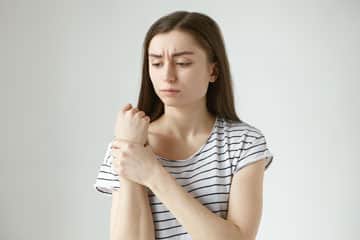
Rheumatoid arthritis (RA) is a chronic inflammatory condition of the joints. According to reports, RA affects up to 1.3 million Americans. The condition affects the joints of the hands, wrists, and knees. Severe pain in the joints is one of the common symptoms associated with the condition. The severity of pain can interfere with the day-to-day activities, making it impossible for people to perform simple activities. There are numerous options to help manage RA-related pain and exercise is one of them. People with RA who exercise may experience less pain than those who do not. Exercise can reduce painful symptoms, improve joint function and flexibility and increase range of motion.
Discussed below are 7 types of exercises that can help people with RA manage pain –
- Biking – People living with rheumatoid arthritis are at high risk of suffering from cardiovascular conditions and related complications. Biking is a low impact exercise that is easier on the joints than other aerobic exercises. This exercise can help improve cardiovascular function and increase joint strength. Go biking outdoors on your own, join a cycling group, or use a stationary bike in the gym or at home.
- Stretching – According to the Arthritis Foundation, stretching can help improve flexibility, reduce stiffness, and increase range of motion. Stretching should include the muscles of the arms, back, hips, the front and back of the thighs and calves. The ideal stretching routine will differ for each person and depend on which joints are affected and their symptoms. A typical stretching routine includes the following –
- Warming up by walking on the spot or pumping the arms while sitting or standing for 3–5 minutes
- Holding each stretch for 20–30 seconds (before releasing it)
- Repeating each stretch 2–3 times
- Walking – A low impact exercise, walking can help with aerobic conditioning, heart and joint health, and mood swings. It can help loosen the joints and reduce pain. It is important to wear the right type of shoes and stay hydrated, even if the walking is not strenuous. Walking must be started slowly and the pace increased over time. People who have trouble with balance, can use walking poles to stabilize their position.
- Pilates – This low impact activity can increase flexibility for enhanced joint health. Perform pilates poses that activate the core muscles and emphasize movements that support stability.
- Water Exercises – Reports from the Centers for Disease Control and Prevention suggest that people living with RA show greater improvements in health after participating in water based exercises, when compared to other types of activities. Water-based exercises like swimming and water aerobics can increase flexibility, range of motion, strength, and aerobic conditioning. It also improves the use of affected joints and decreases pain. Water based activities helps support body weight by minimizing gravity, which means that water exercises do not impact heavily on the joints.
- Flowing movements, such as tai chi and yoga – Flowing movements like Tai chi and Yoga involves a combination of deep breathing, flowing movements, gentle poses, and meditation. These movements can improve flexibility, balance, and range of motion.
- Strength Training – Strengthening the muscles around the affected joints can reduce pain symptoms. Using a resistance band is a great way to challenge the body and build muscles over time.
Regardless of the option you choose, the important thing is to exercise consistently. Practicing a variety of exercises can help avoid overworking one set of muscles or particular joints. Even people with RA should stay physically active, it is equally important to avoid discomfort or injuries by reducing the intensity of exercises on days when symptoms tend to become more severe. During such days, do low impact exercise or avoid working out
